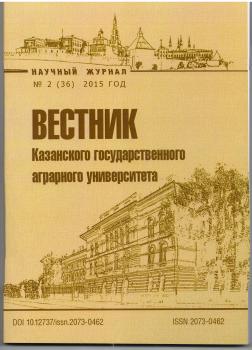The research carried out in 2005-2013 by a bookmark of field experience in the territory of the Chuvash Agricultural Research Institute. The experience was laid on three-factor scheme. Factor A is fertilizers: 1. Without fertilizer when the soil humidity is 40, 60 and 80%; 2. N60P45K45 when the soil moisture is 40, 60 and 80%; 3. N120P90K90 when the soil moisture is 40, 60 and 80%; 4. N180P135K135 when the soil moisture is 40, 60 and 80%. Factor B is decapitation: 1. Sort Diana without decapitation; 2. Sort Diana with decapitation; 3. Sort Ingreda without decapitation; 4. Sort Ingreda with decapitation. Factor C is the conditions of seeds reproduction: 1. Negative selection + decapitation + watering; 2. Negative selection + no decapitation + watering; 3. No negative selection + decapitation + watering; 4. No negative selection + no decapitation without + watering; 5. Negative selection + decapitation + no watering; 6. Negative selection + no decapitation + no watering; 7. No negative selection + decapitation + no watering; 8. No negative selection + no decapitation + no watering (control). The calculated doses of fertilizers were applied according to the experimental scheme. The size of each experimental plot is 10 to 10 meters (100m2). Replication - 3-fold. The decapitation in phase of 3 pair of leaves allows us to “grow 2-6 branches, where one grew up”. The optimal dose of nitrogen is 200 kilogramm, and phosphorus and potassium - 100-150kilogramm per 1 hectare so that to wake up in decapitated plants in phase of 3 pairs of leaves, axillary vegetative buds and the formation normal reproductive developed 5-6 branches. At the same time, during the phase of the three pairs of leaves the soil moisture should be 75-80% of full moisture capacity to full bloom. The total length of the time inflorescences technical maturity equals 263.2 - 282.2 cm, and the seed weight of 26.3-28.2. During decapitation the reproductive number of branches increases, compared to the control, to 3.5-3.8 times. The decapitation in combination with negative selection and vegetation watering produces up to 8.4 m stems, 2.5 tons of seeds and 2.2 tons of fiber from each hectare of crop.
cannabis, decapitation of plants, fertilizer, productivity, sowing method, seeding rate.
Конопля (Cannabis sativa L.) как прядильная и масличная культура на территории России используется с конца первого тысячелетия [1]. Она всегда отличалась необычайной отзывчивостью на труд: занимая 3-5% пахотных земель, обеспечивала до 40-50% доходов от растениеводства [2]. Она буквально пронизывала все стороны крестьянского мира: его и кормила, и одевала. Например, из волокна делали одежду, платки, одеяла, скатерти и даже кружева [3]. Масло использовали в пищу, для заправки лампад и светильников, для производства мыла и олифы [4]. У конопли практически не оставалось отходов, даже никчёмные остатки вывозили в огород для смягчения почвы [5].
Необходимо отметить, что в прежние времена повышение урожайности конопли и качества её продукции достигалось путём проведения оптимальных обработок почвы и ухода за растениями, а также правильной организацией уборки и послеуборочной доработки семян [6]. Естественно, все эти агроприёмы требовали вложения больших затрат труда, тем самым служили основной причиной высокой себестоимости и низкой рентабельности производства конопли [7].
В настоящее время при возделывании некоторых сельскохозяйственных культур, например, томатов, табака, хмеля и винограда, с целью увеличения урожайности очень модным стало использование так называемых «зелёных операций». К ним, в частности, относятся прищипка цветочных побегов, нормирование плодоношения, укорачивание подземной части у рассады и взрослых растений [8]. По мнению учёных, такие «хирургические воздействия» позволяют создавать оптимальное соотношение между ассимиляционным аппаратом, корневой системой и величиной продуктивных органов [9].
Условия, материалы и методы исследований. Исследования проводили в 2005-2013 годах путём закладки полевого опыта на территории Чувашского НИИ сельского хозяйства.
1. Sukhorada T.I. Konoplya - kultura buduschego. // Tr. In-ta / Krasnodarskiy NIISKH im. P.P. Lukyanenko. [Cannabis is the culture of the future. Proceedings of Institute / Krasnodar Agricultural Research Institute named after P.P. Lukyanenko]. - 2000. - P. 8-13.
2. Dimitriev V.L. Rezervy i perspektivy razvitiya konoplevodstva v Chuvashskoy Respublike. // Mat. vseros. nauch.-prakt. konf. “Regionalnye osobennosti agrarnykh otnosheniy v Rossii: istoriya i sovremennost”. - (Reserves and prospects of cannabis-growing development in the Chuvash Republic. / Dimitriev V.L., Stepanov G.S. // Proceedings of scientific and practical conference “Regional features of agrarian relations in Russia: history and modernity”). - Cheboksary, 2010. - P. 75-77.
3. Dimitriev V.L. Konoplya kultura 21 veka. // Mat. nauch.-prakt.konf. “Nauchnoe obespechenie natsionalnogo proekta “Razvitie APK”. - (Cannabis is the culture of the 21st century. / V.L. Dimitriev, AV Shilov // Proceedings scientific and practicl conference. “Scientific support of “Agriculture development” National Project”). Volgograd, 2008. - P. 156-159.
4. Stepanov G.S. Resursnyy potentsial konopli i puti ego effektivnogo ispolzovaniya. // Materialy regionalnoy nauch.-prakt. konf. (24-25 oktyabrya 1997g.). (Resource potential of cannabis and the ways of its effective usage. // Proceedings of Regional scientific and practical conference. (24- 25 October 1997)). - Cheboksary, 1998. - P. 47-48.
5. Timonin I.A. Narodnokhozyaystvennoe znachenie konopli i razvitie konoplevodstva v SSSR. // Konoplya. [Economic importance of cannabis and cannabis-growing development in the USSR. // Cannabis.]. Edited by G.I. Senchenko, M.A. Timonin. - M.: Kolos, 1978. - P. 5-8.
6. Borisenko P.T. Agrotekhnika. // Konoplya. [Agrotechnics. // Cannabis]. Edited by G.I. Senchenko, A.I. Arinshteyn, M.A. Timonin. - M.:Kolos, 1963. - P. 3-17
7. Kirilyuk A.P. Ekonomicheskaya effektivnost proizvodstva konopli i osnovnye puti ee povysheniya. // Konoplya. [Economic efficiency of cannabis-production and the basic ways of its improvement. // Cannabis]. Edited by G.I. Senchenko, M.A. Timonina. - M.: Kolos, 1978. - P. 280-286.
8. Tarakanov G.I., Mukhin V.D. Ovoschevodstvo. [Vegetable-growing]. - M.: Kolos, 1993. - P. 511.
9. Sovetkina V.E., Yakovlev N.S. Vliyanie srokov vershkovaniya i chislakistey na urozhaynost i kachestvo plodov tomata pri letne-osenney culture. // Rezervy povysheniya urozhaynosti ovoschnykh kultur. [Influence of tipping times and number of brushes on productivity and quality of tomatoess during the summer-autumn culture. // Reserves of increase of vegetable crops productivity]. Leningradskiy s.-kh. in-t. - Leningrad, 1990. - P. 50-55.





